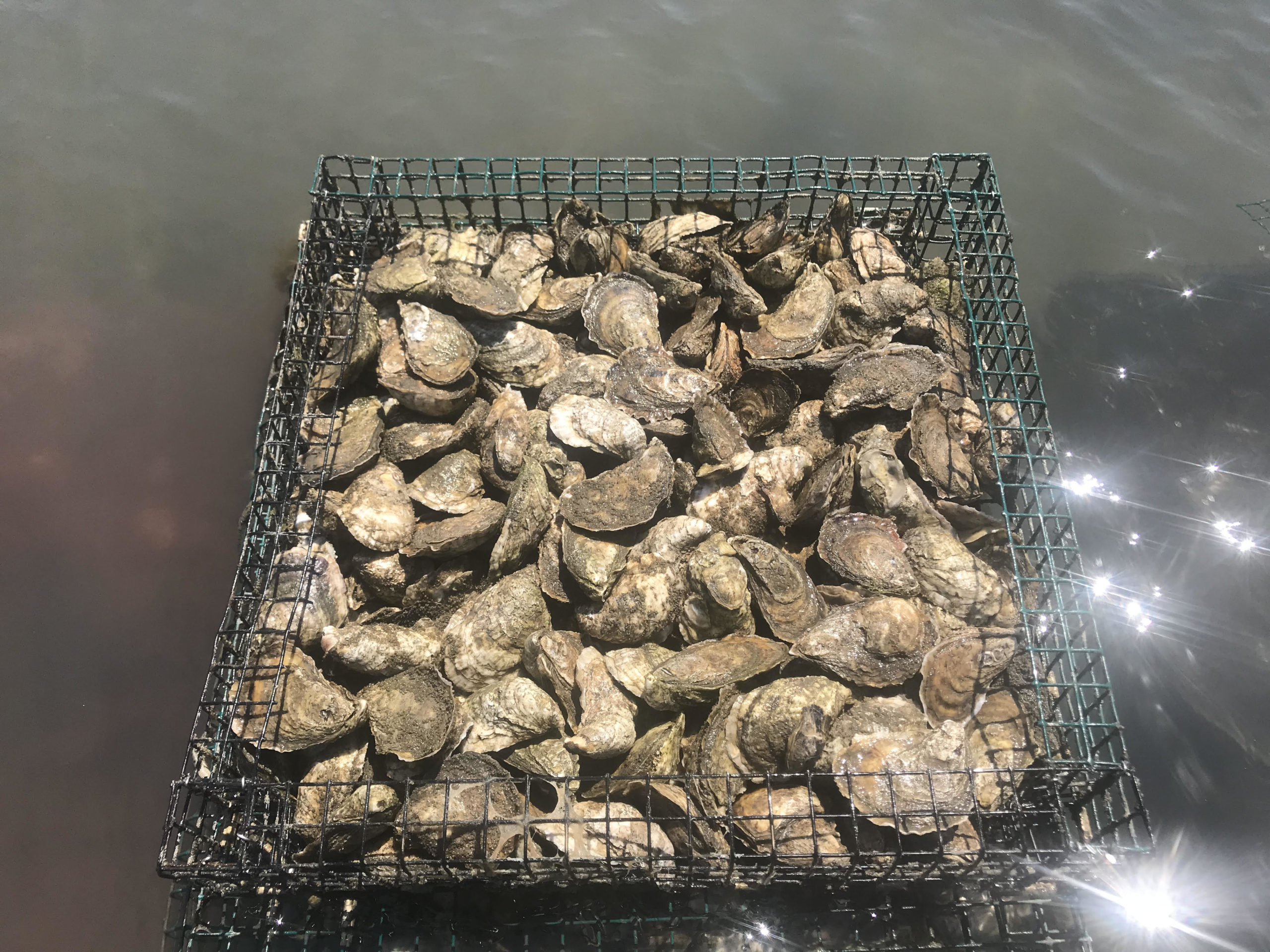
Title: Water Quality for Fisheries: PFAS and Heavy Metal Contamination in North Carolina Farm Raised and Wild Caught Oyster Populations
Coastal Carolina Riverwatch (CCRW), in collaboration with Dr. Lee Ferguson at Duke University, is embarking on a crucial mission to address water quality concerns in the White Oak River Basin (WORB). This initiative, funded by the NC Attorney General’s Office through the Environmental Enhancement Grant (EEG) program, aims to safeguard the oyster populations in North Carolina by assessing the presence and levels of PFAS and heavy metal contamination. Through this project, CCRW seeks to elevate community voices, educate underserved coastal areas, and advocate for sustainable farming and fishing practices.
Project Summary:
Coastal Carolina Riverwatch (CCRW) is a non-profit organization dedicated to preserving water quality in the White Oak River Basin. Through our Water Quality for Fisheries Program (WQ4F) and in collaboration with Dr. Lee Ferguson at Duke University, we’ve identified PFAS, mercury, and heavy metals as significant threats to shellfish waters in the coastal White Oak River Basin. Industrial pollution is among the top concerns for those who fish off the coast of North Carolina.
Background:
Oyster contamination and consumption safety are of paramount importance in coastal North Carolina. Farmed oysters contribute significantly to the state’s economy, while wild harvests have declined in recent years. Fishing, both commercial and recreational, plays a crucial role in the livelihoods of many, including subsistence fishers.
To achieve the state’s goal of exceeding $100 million annually in its shellfish industry by 2030, clean water is essential for cultivating healthy clams and oysters. Many aspiring aquaculturists face environmental and socioeconomic challenges, underscoring the importance of ensuring that waters and shellfish are safe for consumption.
Coastal communities within the White Oak River Basin are particularly vulnerable due to their proximity to coastal waters, low elevation, and increased flood risk. Climate change-related factors, such as storms and sea-level rise, pose additional threats to their food sources and livelihoods.
While seafood consumption advisories exist, current oyster advisories in coastal NC do not include PFAS and heavy metals. It is essential to assess the levels of these contaminants within oysters in the WORB to provide insight into the safest aquaculture areas for oyster producers. The decline in commercial oyster landings and the increase in oyster mortality highlight the urgency of this assessment.
Research:
The “Water Quality for Fisheries: PFAS and Heavy Metal Contamination in North Carolina Farm Raised and Wild Caught Oyster Populations” project will determine the presence and levels of PFAS and five heavy metals (mercury, lead, copper, zinc, and cadmium) within oyster tissue in both wild-caught and aquaculture environments.
CCRW will partner with universities, oyster farmers, and commercial wild-caught fishers to collect samples from areas with known PFAS sources and areas without known PFAS sources. These samples will be processed and analyzed at Duke University. The project will also include a survey assessing oyster consumption in the WORB, conducted by ECU’s Center for Survey Research, to provide valuable data.
The study will assess 120 individual oysters from 10 sampling locations throughout the WORB, including aquaculture populations and wild populations. PFAS, mercury, lead, copper, zinc, and cadmium will be targeted due to their known presence in coastal waters and their significant implications for human health. The project will use advanced analytical techniques to detect and quantify these contaminants.
Outreach:
CCRW will develop a collaborative and performance-based outreach and educational campaign to inform the public about the impact of PFAS and heavy metals on North Carolina’s coastal fisheries and fishing communities. The campaign will provide actionable information on reducing water quality and fisheries’ impacts.
Outreach materials will be tailored to the intended audience, including community members, oyster fishers, state and county authorities, and researchers and educational institutions. These materials will include an assessment report, a StoryMap, educational diagrams, visuals for social media, and in-person community collaborative meetings in areas of concern.
Throughout the project’s duration, CCRW and ECU will conduct surveys to assess the public’s understanding of contamination’s impact on water quality and oyster consumption trends. This feedback will help measure the effectiveness of the outreach and education efforts.
Outcomes:
The expected outcomes of this project include:
- Identifying areas with lower PFAS and heavy metal contamination for the benefit of commercial fisheries and seafood consumers.
- Involving oyster fishers and aquaculturists in research and decision-making.
- Increasing understanding of the threats to oyster populations caused by environmental changes.
- Informing future water quality measurement efforts in the WORB and other coastal waterways.
- Notifying relevant authorities of PFAS and heavy metal levels in shellfish populations in North Carolina.
- Raising public awareness and knowledge of water quality impacts from PFAS, mercury, lead, copper, zinc, and cadmium.
- Preserving and enhancing North Carolina’s natural resources.
- Assessing coastal threats to commercial, recreational, and subsistence fishers in coastal NC.
After the project’s completion, the materials and analysis methods developed will be shared with the public and continue to be hosted on CCRW’s website. This project is an essential step toward protecting North Carolina’s oyster populations and ensuring the safety of the seafood they provide to the community.
